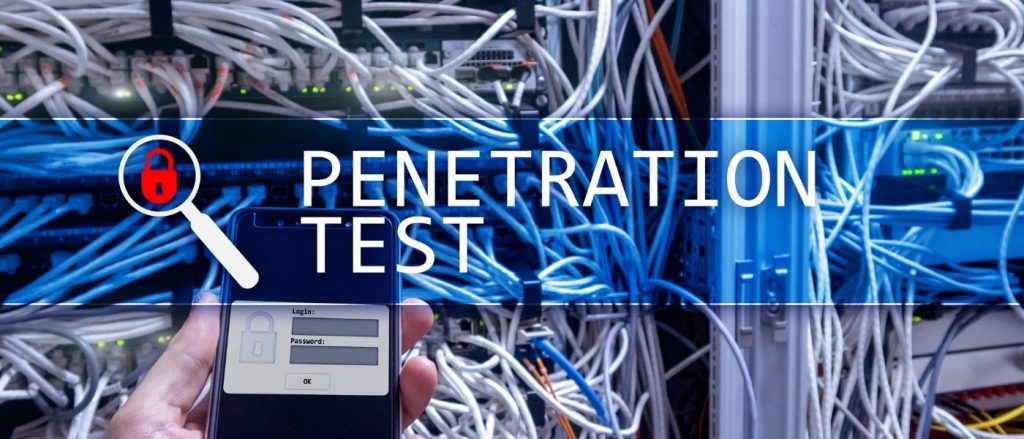Complexities of software coding have risen exponentially over recent years, without signs of slowing down. As an example, Microsoft 95, released 25 years ago, consisted of 15 million lines of code. With the arrival of cloud-connected structures, software in a connected automobile uses approximately 100 million lines of code. Google services account for a whopping 2 billion lines of code.
Coding languages have witnessed a dramatic rise in complexity. In the 90s, COBOL and PYTHON were the only coding languages. There are now over 700 viable languages, with some suggesting that figure is more like 9000.

Coding Vulnerabilities
Flaws in software can appear on any line of code, with vulnerabilities impacting performance and security. Software coders need to recognize the various languages and understand how to enforce the latest security procedures.
Code vulnerabilities create security gaps, which astute hackers look for in every app and software offered to the public.
The Open Web Application Security Project is an open-source, non-profit organization working to upgrade software security. The OWASP Top 10 is an awareness document highlighting critical security risks to software, mobile applications, and web programs. It is helpful for every developer and web application engineer to be acquainted with this list.
- Injection flaws are rampant everywhere and especially in legacy code.
- Broken authentication methods are implemented incorrectly, leaving the door open for attackers.
- Exposing Sensitive Data in web applications and APIs do not sufficiently protect sensitive data.
- XML External Entities are attackers exploiting vulnerable, legacy XML processors.
- Broken Access Control is poorly written code on what authenticated users are authorized to do within the system.
- Security Misconfiguration is a common issue that results in ad-hoc configurations and vulnerable HTTP headers.
- Cross-Site Scripting XSS is untrusted data released in the code due to improper validation or escaping.
- Insecure Deserialization are flaws in the code that can contribute to remote execution.
- Using Components with Known Vulnerabilities are flawed libraries, frameworks, and software modules.
- Insufficient Logging and Monitoring is inadequate integration that allows attackers entry into full system capabilities.
Vulnerability Assessment and Penetration Tests
VAPT are two types of code analysis that may be applied individually but are powerful when combined. The tests provide two distinct results in the same area of focus. Vulnerability scanning alerts a developer to preexisting defects in the code, exploiting vulnerabilities in the system.
Penetration tests and Vulnerability scans are never in competition with one another. Instead, the two processes complement each other to expose potential security defects.
Software Testing Methodologies
Just as code has become complex, so have the mechanisms to analyze each line for verification and security. The principal testing methodologies are The Agile Model, Waterfall Method, V-Model, the Incremental Model, and X3.
Models and methodologies above are responsible for a product’s conformity with enterprise requirements. From the viewpoint of testing objectives, there are two types of software validation, Functional Testing and Non-functional. These are for another post.
Vulnerability Assessment
Writing secure code is now a requirement for every developer. While learning a specific language, the developer must provide a code format that stands up to several security testing strategies. A survey from DevOps found that 70% of programmers are expected to write secure code. However, only 25% of those coders feel their companies are secure and provide the means needed to create good code.
Secure coding is taking place in every industry, from biotech to finance and construction. The tools needed to analyze the code are growing more intricate by the day.
Vulnerability Assessments are an investigation that involves locating and verifying the magnitude of code flaws. Each vulnerability scan prioritizes the weaknesses in a cyber security system. A vulnerability assessment takes stock of the current cyber-policies, structures, and code. The tool then determines a severity level and makes specific proposals or immediately mitigates the threat to correct the code.
Vulnerability scanning looks for backdoors in the software, malicious code, and web vulnerabilities. Scanning tools search for the ten security threats highlighted above.
A single scanning tool involves a substantial investment and upgrade schedule to keep your business and software secure. In addition, a separate vulnerability scanner looks solely at the base code of an application, not the binary code.
Vulnerability Scanning Tools:
One of the most complete Vulnerability Scanning and Penetration Testing applications comes from Veracode. The platform is a holistic cloud-based method for application security.
Veracode is an on-demand vulnerability scanning application with a wealth of advanced components.
After a scan, results are prioritized by a Fix-First Analyzer:
- Business objectives
- Risk tolerance
- Level of risk each vulnerability represents
- Flaws that can be fixed the quickest
A powerful feature of Veracode is that it will scan binary code in addition to an application’s source code. This binary code advancement allows an enterprise to examine 100% of an application, delivering a more robust evaluation.
——————————————————————————————————————————
Netsparker is an automated Vulnerability Scanning tool that provides administrators plenty of advanced tools to protect their code. The automated tests can save an IT staff 100s of hours by simply setting the scan tool and letting it run.
Netsparker uses a dynamic and interactive scanning technique that is exclusive to the industry. Independent researchers have identified that Netsparker finds more code vulnerabilities than most other scanning tools.
Another huge advantage to Netsparker, as the tool is scanning a piece of software, it teaches developers how to code better.
—————————————————————————————————————————–
SolarWinds is another solution for code mitigation. The SolarWinds tool scans devices and their firmware to keep the network compliant. The tool prevents unauthorized intrusion into routers and IoT devices while monitoring if any unusual changes are made.
With some companies having thousands of network appliances, SolarWinds can target each mechanism to keep firmware current. Complex network changes are more workable with SolarWinds.

Penetration Testing
Identifying weaknesses in a code’s architecture, including unauthorized access vulnerabilities, is called a Penetration Test. These assessments are also called pen tests and ethical hacking. A Pen Test attempts to break the shield of an enterprise’s cyber-defense system.
Ethical hacking describes the deliberate launch of a cyber-attack by white-hat testers. These penetration testers use numerous weapons to exploit computer systems, websites, networks, and other digital mediums.
The principal objective of penetration testing is to identify exploitable holes in the code for attack entry. Along with finding security issues, coding professionals can apply the information to test the strength, stability, and administrative compliance.
Five Penetration Testing Strategies:
- External testing involves attacks on an organization’s network from outside the company’s system and extranet.
- Internal testing looks at what damage an authorized user could do if they penetrated specific company resources within the company network.
- Blind testing is a test simulating the actions of a real hacker. The target would have no prior information on the attack, relying exclusively on public information sources.
- Double-Blind happens when only a few in the organization are aware of the attack. The double-blind is meant to monitor escalation and defense strategies.
- Targeted testing is a fully aware testing strategy. Management and IT staff are aware of the attack, and the target is known to all teams. Targeted tests are generally used for time response.
Top Penetration Testing Tools:
Synopsys is a complete platform for enterprise security. Synopsys is technically advanced that allows the enterprise to target code from any software or application product. Defect detection is a dynamic feature of the platform with very low false positives.
The Synopsys platform ensures security is built into the fundamental code with advanced development tools spanning all process stages.
Pentera is a fully automated Penetration testing tool that has all the characteristics of a real hacker. The tool can be set to test code and systems for any future attacks on a continuous loop. Pentera is an advanced Penetration tester for the most deadly cyber-attacks and breachable vulnerabilities.
The Penetration tool scans and emulates an attacker by going after each coding layer. The results will arm the enterprise with a risk-based remediation roadmap. In some instances, using Penetra, enterprises saw over a 500% increase in remediation efficiency.
Working Together
Vulnerability assessments and penetration testing tools are excellent as a stand-alone operation. However, combine the two, and IT professionals have the ideal combination to detect and mitigate flaws in every layer of code.
Scans using a vulnerability tool is a high-level first-stage test that searches for possible deficiencies in the code. Penetration tests take the examination a step further by replicating an actual cyber-attack, exploiting specific vulnerabilities in the system.
Used together, the two tests are meant to give an expert IT staff a detailed picture of risks and flaws in base and binary code. Each test has its specific strengths and proficiencies. Combined, the tests paint a complete vulnerability picture, and results enable organizations to upgrade their software before it hits the market.
Even though the two processes are related, they are not interchangeable. Once an organization runs a vulnerability scan, the company is in a better position to rectify weaker areas of a system. The vulnerability scan offers up an extensive list of failings found within the various company systems.
A vulnerability scan is a quick and affordable option, allowing administrators to perform the scan regularly. The issue with this type of scan is, it does not confirm whether weaknesses are exploitable. Vulnerability scanning software will fix some issues; however, it is not tailored to a specific organization.
Unlike a vulnerability scan, penetration tests are incredibly detailed. Pen tests will pinpoint specific risks associated with a blatant weakness. Pen tests are time-consuming and labor-intensive. Organizations should use a live, manual Pen test to get a far more accurate and thorough result.
A tester’s skill set should not be underestimated. The ability to identify weaknesses and understand how weaknesses can be manipulated is a skill unto itself.
Acunetix Web Vulnerability Scanner
Acunetix combines a host of high-level technologies to create a continuous automated threat detection system. Scans can be set to look through HTML, JavaScript, and Restful APIs to find security holes. Acunetix can also scan for code outside the main application, such as content management and delivery sub-systems.
Included in the Penetration tests are SQL injection and cross-site scripting. Reporting documents are compliant with several agencies such as HIPPA and PCI-DSS.
Scans by the Acunetix are made more accurate by sensors placed within the code. Organizations such as the US Air Force and AVG are impressed by Acunetix advanced technologies.

Final Word
Change is inevitable and especially within the industry of code development. Organizations will inevitably have a range of weaknesses in their code due to constant flux and technological advancements. Unmonitored changes such as firewalls having ports left open for email and other communication preferences cause havoc if not appropriately covered.
The modern organization needs to take proactive steps to secure their enterprise. The brightest minds in the world are continually working on the threats posed by cyber-attackers. Vulnerability Scans and Penetration Testing are excellent tools for mitigating a majority of faulty and dangerous code before it hits the shelves.
Want to find out what vulnerabilities your business has? Then contact us here at BACS IT. We can provide an assessment of your business and show you what we would recommend to ensure the safety of you, your employees, your clients, and your data. Contact us today!

